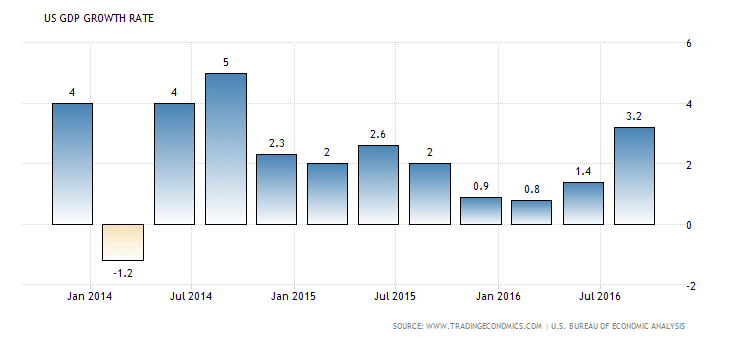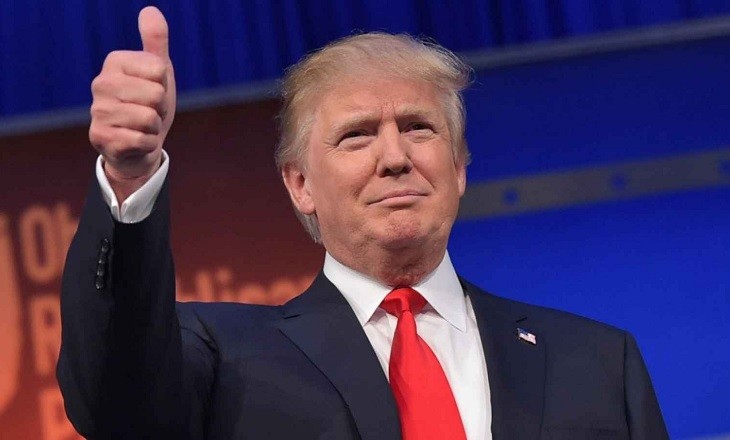This article was written by Luis Aureliano, a business writer and financial analyst. With over 15 years of experience in global finance and an MBA in economics and management, Luis’s areas of expertise include business, marketing, communications, personal finance, macro economics, stocks and emerging markets.


Luis Aureliano
President Trump wants to renegotiate the terms of important trade deals such as NAFTA so that they are more favorable towards the US. While Trump appears to be in favor of free trade, he is at odds with the concepts of free trade by imposing strict tariffs, taxes and duties on American companies wanting to set up shop overseas, or on foreign companies trading with the US. Nonetheless, Trump is steering the US economy in a protectionist-style mould through his presidency.
What Profitable Trading Opportunities Exist under Trump?
We have seen a risk-on approach being adopted to equities markets since the November 8 presidential election. Trump has boosted sentiment in the US economy dramatically. The USD has rallied to a 52-week high on the DXY (US Dollar Index) and the Dow Jones is trading above 19,000. Yields on government bonds are also hitting their straps, alongside banking and financial stocks. We saw a sharp reversal in biotech stocks taking place as Trump recently commented that he wants to bring down the price of medicine in the US.
Shipping stocks have surged since Trump’s election, but they remain the most volatile stocks on the market. These are all examples of how traders can profit on a wide range of tradable assets. Bank of America Corporation (BAC), Citibank(C), and to a lesser degree Wells Fargo & Co, (WFC) have enjoyed strong growth of late. The upcoming interest rate hike on Wednesday, 14 December 2016 will act as a catalyst to banking and financial stocks. These trends are going to continue into 2017, as the Fed is likely to enact 2 additional rate hikes next year.
Trump Turns Convention on Its Head
The reality of a Trump presidency is daunting to many people who have become complacent with the status quo. Trump is the political outsider, the proverbial bull in the china shop. However, he has incredible business acumen and this is reflected in his resilience as a business mogul, despite the adversity he has suffered. He brings this same winning attitude to the Oval Office, and it is already manifesting in several deals that he has helped to broker.
For example, the deal with Carrier to retain operations in the US and save over 1,000 jobs has been lauded as a Trump thump. Additionally, the recent agreement with SoftBank CEO Son and Trump to bring $50 billion worth of investment and tens of thousands of new jobs to the US has also been bandied about. This bodes well for the telecommunication sector in the US such as Sprint, which is owned by SoftBank. Many similar examples abound, not least of which is Boeing which will now have to cut costs to renew its deal with the US government.
Efficiency of Trading Operations
It comes as no surprise that conventional trading methods are also losing favor. In an era where cost-cutting is essential, traders are finding inventive ways of dabbling in the financial markets. For example, Bank of America Corporation is rapidly moving towards a cashless banking system within its company. Digital payments transfers are now gaining traction. Plus, an exciting Fintech-style innovation in the form of cashless ATMs is now underway with Bank of America Corporation. These new ATMs do not accept bank cards – they run off wireless technology.
In much the same fashion, traders are shying away from institutional brokerages and turning to binary options brokers. The cost savings of streamlining trading activity are immense. Typical brokerages like Fidelity charge fixed fees for every trade that is opened and additional fees for every trade that is closed. With binary options brokers, there are no hidden fees, commissions or unwarranted charges. Traders don’t need to place a high minimum on their trades, and leverage and margin are not even considered.
In the Trump era, we can expect greater cost efficiency, profit maximization and accountability in financial dealings. Whether Trump can drain the proverbial swamp in DC is secondary to the fact that he is boldly taking on something much bigger than himself.
